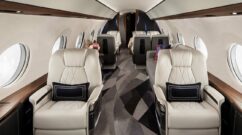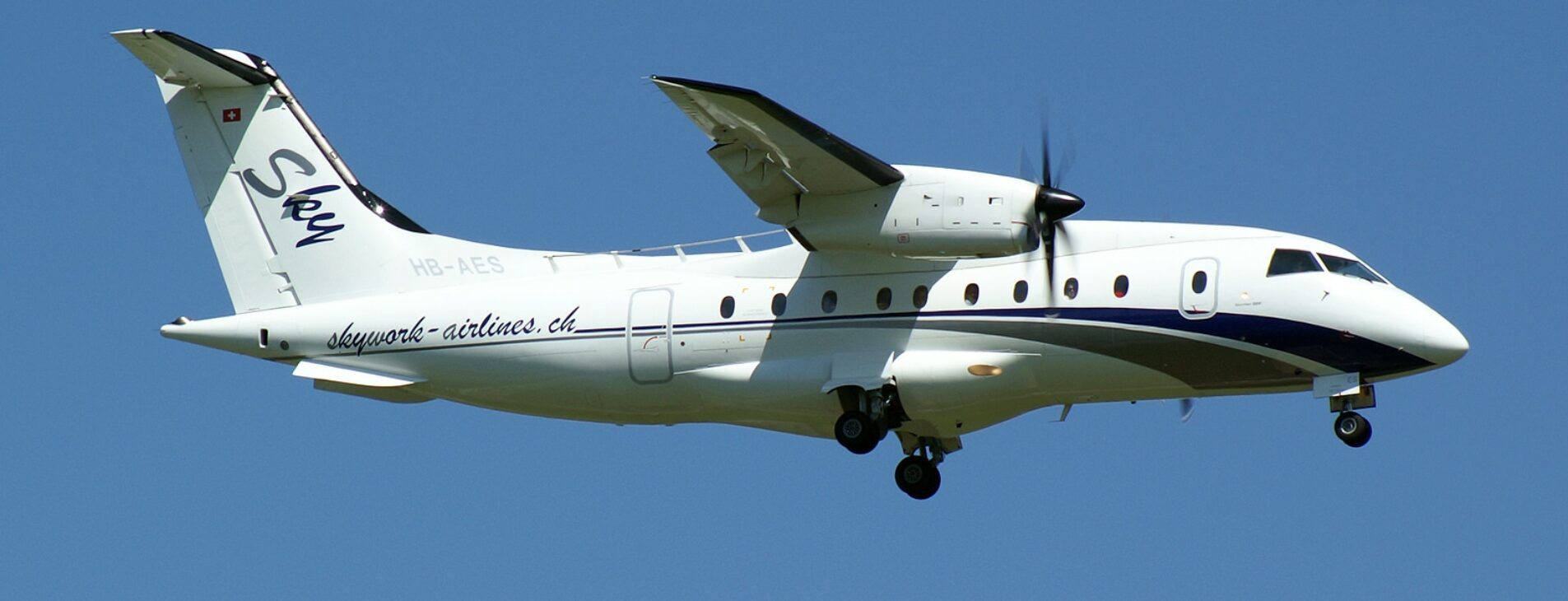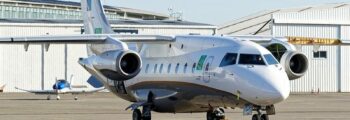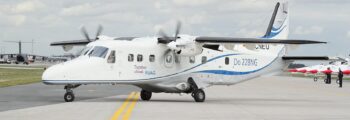“Dornier is a German aircraft manufacturer created by aeronautical expert and engineer Claudius Dornier. This aeronautical company, founded between the two wars in 1922, was closed in 2002. It leaves behind a beautiful story and achievements in the aviation world. Dornier notably distinguished itself by creating propulsion aircraft (turbopropellers, turbojets). Its primary aircraft models include the Dornier 328 and the Dornier 228. Immediate takeoff and investigation into this former German company specialized in aviation.
The story of Claudius Dornier, founder of the Dornier aircraft manufacturer
Every beautiful story begins with a main protagonist. He is Claudius (or Claude) Dornier. C. Dornier was born on May 14, 1884, in Germany in the city of Kempten, in the Southwest region of Bavaria. His family is of French origin, specifically from the city of Arçon in the Bourgogne Franche-Comté region. The parents of C. Dornier: Dauphin-Désiré Dornier and Mathilde Buck, settled in Germany after their marriage.
The CEO, Claudius Dornier, has always been passionate about aeronautical and aerospace fields. In 1907, the 23-year-old man graduated as an engineer from the technical university of Munich. Having French nationality from his parents but having lived entirely in Germany, C. Dornier became a naturalized German in 1913. However, he retains his French nationality. He then began working in the field of engineering in the city of Karlsruhe. Following his successful experience at the Zeppelin aeronautical company, C. Dornier started several research projects. On one hand, he studied, somewhat like routine operations, the design and the strength of certain lightweight metals. His goal was to innovate in terms of aircraft, planes, or seaplanes.
In 1922, the Dornier Wal, a seaplane, was created. The name Wal comes from the German word for whale and refers to the appearance of these planes.
He would later manufacture propeller-driven aircraft types with ingenious setups. This marks the beginning of the airline’s fleet of aircraft. C. Dornier configured a system with propellers at the front and at the rear of the engine. This provides both a pull at the front and a push at the back, thus enhancing the maneuverability of the planes. This propulsion method made him a reference in this field.
C. Dornier built a career in aeronautics and manufactured numerous aircraft, from the study of materials to their final assembly. He died in 1969 in Switzerland. He had four children, including Peter Dornier, who would take over the company until 2002 (the year which marks both the death of P. Dornier and the halt of the Dornier industry).
The history of the Dornier aircraft manufacturer
The beginnings of the Dornier manufacturer during the interwar period
As seen with the story of its founder Claudius Dornier, the company was created in 1922 during the interwar period. Its first seaplanes, the Dornier Wal, were initially built in Italy at the seaside resort of Marina di Pisa. Why Italy? Because Dornier had to face the constraints stated by the Treaty of Versailles to manufacture aircraft. These seaplanes would be exported around the globe.
It was during the interwar period that Dornier truly saw the rise of its aeronautical company. Indeed, the Dornier planes made their first test flight, particularly its hull seaplanes, which are ideal and widely used for both intercontinental and especially transatlantic links. Specifically, it was the Dornier (Do) Wal and their successors the Do 18 and Do 26 that opened the first lines for passenger transport across the Atlantic Ocean. Also, before the Second World War, Dornier manufactured what would become the largest aircraft of the interwar period, the Do X. It was an aircraft equipped with no less than 12 propeller engines arranged two by two. It was nicknamed the flying boat. Claudius Dornier would later strive to find ways to enhance the aerodynamics of these planes. For example, on the Do 26 model, retractable floats are installed during flight, deployed before landing, or rather, water landing, because these planes land on water! This advancement improves the handling of these massive planes in the air.
The Dornier aircraft manufacturer during the Second World War
At the beginning of the Second World War, the Do 26 models and the Do 18 were equipped with armaments. They were used by the Luftwaffe, the German air force, from 1939. These seaplanes allowed for reconnaissance, particularly over the North Sea. The Do 24 model is a trimotor that was manufactured a few years before the start of the war. It made its first flight in 1937. The German air force ordered no less than 217. This type of aircraft then became one of the most important during this period, performing notably maritime rescue missions. After the war, the Do 24 model was integrated into the French Navy. Likewise, Dornier launched the Do 17, a military aircraft nicknamed the “”flying pencil”” due to the slimness of its fuselage.
Then, at the end of the war, the Dornier 335 was manufactured; it made its first flight in 1943. It is a twin-engine aircraft that was designated at the time as the fastest aircraft in its category, with a speed of 765 km/h. And a novelty of the time, it was with this aircraft that the ejector seat was installed.
The history of Dornier during the post-war period
During the war, the aviation giant Dornier was an aircraft industry that therefore manufactured planes for the war, and thus produced, in a way, armaments. In Germany after the war, a denazification was carried out; the Dornier aircraft manufacturer was not judged for this, but his company was not doing well. Indeed, his factory located near Lake Constance was destroyed. Dornier would then settle in Switzerland in the city of Zug. Indeed, it was forbidden in Germany, for a while after the war, to engage in aeronautical construction. In parallel with his factory in Switzerland, he had his aircraft assembled in Spain. When this ban was lifted, he once again established a factory in Lindau (Germany).
It was not until 1956 that Dornier finally recovered with the successive manufacturing of the Do 27, Do 28, and Do 31 aircraft.
In 1962, at the age of 78, Claudius Dornier passed on his company to his sons and stepped back from his duties. The Dornier company continues to operate and subsequently developed a propeller regional airliner, the Dornier 228, as well as the Dornier 328. Both are short-haul aircraft.
In 1985, the Dornier family aeronautics company was purchased by the automotive manufacturer Daimler Benz. Then in 1996, Dornier was sold to Fairchild, an American aircraft manufacturer. This marked the decline of the Dornier company and the manufacturing of aircraft. With ambitions to land its planes intercontinentally after incurring too many costs and uncompleted projects like new aircraft types, the company declared bankruptcy in 2002. It closed its doors permanently, marking the end of the Dornier aircraft manufacturer’s story.
The main aircraft of the Dornier aircraft manufacturer
- The Dornier 328 : This model of aircraft is a twin-engine jet specialized in regional transport and short-distance links. There are no long-haul aircraft at Dornier. After manufacturing numerous planes for the military and seaplanes, Dornier sought to diversify its offer. Thus was born the Dornier 328, a regional aircraft with 33 passenger seats onboard, plus crew members in a spacious cabin. It made its first flight in 1998 and was certified the following year. To date, around one hundred Dornier 328s are in service, making it the model that resembles more of a business aircraft. The cabin interior is 1.87m high, allowing the vast majority of its passengers to feel comfortable and not cramped within the aircraft. This regional aircraft offers comprehensive services on board, including restrooms and a well-equipped kitchenette.
- The Dornier 228: Manufactured from the 1980s, the Dornier 228 precedes the Dornier 328. It is a regional aircraft capable of transporting 16 passengers but also performing cargo flights for the transport of goods. Like the Do 328, this regional aircraft is ideal and cost-effective for short distances. Indeed, its range is 1800 km. This aircraft has been praised and recognized for its robustness and efficiency in evolving in complex conditions. Furthermore, it has the ability to land on short and sometimes underexploited runways. This earned it the nickname “air truck.”
Dornier 228 – Photo Credit: Commons Wikimedia
At AEROAFFAIRES, our private aviation experts are available 7 days a week and 24 hours a day to respond to all your charter requests. Contact us at +33 (0) 1 44 09 91 82, or fill out our online quote directly.
“







